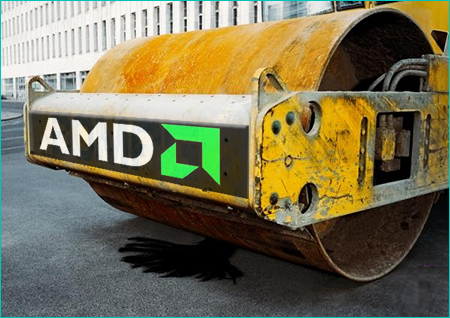
Nobody can radically change a computing architecture and manage to get the first iteration to act exactly as what was initially envisioned. Just like AMD's Barcelona some time ago, many expected it to trample all over Intel’s Core 2 Duo, but in fact it didn’t.
There was nothing catastrophically wrong with the design itself, but not all the bugs were ironed out and the design was not completely optimized.
At the time, Barcelona seemed rushed out, as the company was in a hurry to offer something different than the popular Athlon 64 X2 available in those days.
The Bulldozer story was similar.
While the design differences between Phenom II and Bulldozer are quite significant and the number of floating point units (FPU) has been halved, many expected the design to literally bulldoze the competition out of the way.
We weren’t so sure about the FlexFP. Our opinion was that it would lead to some serious efficiency and throughput increases in the server sector, but on the desktop side we would have considered AMD lucky if it managed to get 4 FPUs to perform like the previous 6 FPUs.
To its credit, AMD has successfully managed exactly that, but that’s certainly not enough to fight Ivy Bridge.
The incoming Vishera silicon with Piledriver enhancements is what Bulldozer should have been in the first place.
We’re sure AMD’s Dirk Meyer was envisioning something like Steamroller. He should have made the initial Bulldozer more like today’s Piledriver, but at least we know that Bulldozer had some issues that have now been ironed out.
Many say that Steamroller will not be able to face Haswell, but the reality is that Steamroller is apparently a proper implementation of the FlexFP concept. The doubling of the cache, dispatch and fetching units will greatly increase the performance.
Many are estimating conservative values ranging between a 20% and a 30% performance improvement over the current Bulldozer processors, but sources inside the engineering department at AMD are reportedly expecting 45% performance improvements.
This puts AMD’s Steamroller beyond Ivy Bridge’s performance and right against Intel’s Haswell.
Some are wondering about the company’s statements that they won’t be fighting for the desktop market anymore.
We believe that’s just PR talk to divert attention from the fact than AMD’s current top desktop CPUs barely make it against Intel’s quad-cores with no fighting chance against any hexa-core from the CPU giant.
The most pressing question right now is whether AMD’s next desktop platform will keep the current socket or whether they will go for something with DDR4.
It would really be early for the company to go for DDR4, as even Intel is not planning DDR4 platforms until 2014, but it will also seem strange to see AMD change two sockets in two years.
A new Steamroller socket with support for DDR3 will allow AMD to get away from any drawbacks that the current AM3+ platform might have, but then, in 2014 they will be forced to put another socket out with DDR4 support.
One strategy would be to keep the current AM3+ design and use some level 4 cache to improve on the lack of a triple or quad channel memory controller, but that remains to be seen.
Via: AMDs Steamroller to Be Faster Than Intel Haswell
Tidak ada komentar:
Posting Komentar